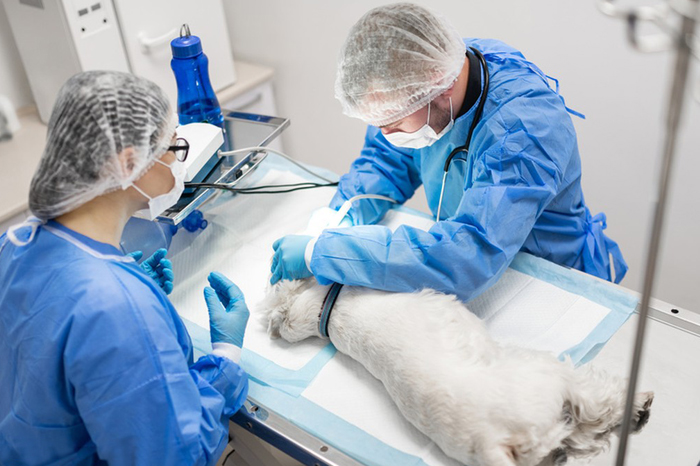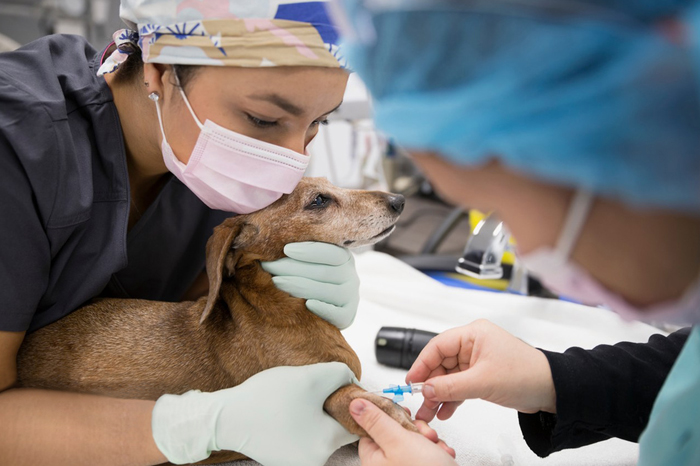As medical advancements continue to help humans, these improvements can also help your pet. With an endoscopy, your vet can diagnose and treat illnesses and address health concerns in your pup.
An endoscopy can facilitate the diagnosis of gastrointestinal issues, respiratory tract issues, and various other ailments. It is a minimally invasive way to eliminate a foreign object causing an obstruction. An endoscopy is an investigative tool that shows why your dog is experiencing symptoms.
There are many types of endoscopy procedures. Check out this article if you want to know what a dog endoscopy is and why it is important.

What is an Endoscope?
An endoscope is a long, flexible tube with a bendable tip. It has a light and a camera attached to examine a hollow organ or part of the body visually. It is placed in the stomach through the mouth or the colon through the rectum.
An endoscopy is the best option for investigating internal illnesses. It is performed for the inspection and sampling of abnormalities. An endoscope can also be utilized to remove foreign objects from the stomach.
Some examples of foreign items that your dog may swallow include:
Clothes
String
Toys
Plastic
An endoscopy can also be used for therapeutic purposes. It is also effective for diagnosing injuries from trauma or illness. It is minimally invasive and less obtrusive than surgery.
What Are the Different Kinds of Endoscopy?
The advancement of human medicine has dramatically improved veterinary medicine, as many of the same procedures are used between the two. Endoscopy is one of those procedures. There are several types of endoscopies. These include:
Respiratory Tract Endoscopy
There are three types of respiratory tract endoscopy procedures. These include rhinoscopy and tracheoscopy/bronchoscopy.
Rhinoscopy
This procedure is employed to examine clinical symptoms such as:
Sneezing
Nasal discharge
Nasal congestion
Nasal bleeding
The vet can see the nasal cavity and the back of the throat with a rhinoscopy. Samples of tissue are gathered for analysis, and foreign bodies in these areas can be removed.
Tracheoscopy/Bronchoscopy
These procedures examine the trachea and lower airways. Some of the conditions involved include:
Chronic cough
Respiratory problems
Pneumonia
Airway disease
It is the way that tracheal or lung diseases are often investigated. Samples are often gathered for review. To determine illness, the vet can see any problems from the inside or lower airways.
Upper GI Tract
There are three types of Upper GI Tract endoscopy. These include esophagoscopy, gastroscopy, and duodenoscopy.
Esophagoscopy
This procedure examines the esophagus. Some of the symptoms involved include:
Regurgitation
Difficulty swallowing
Excessive drooling
This procedure is employed to diagnose diseases of the esophagus.
Gastroscopy
Gastroscopy looks at the inside of the stomach. Some of the conditions involved include:
Chronic vomiting
Anorexia
GI bleeding
Gastric masses
Samples are often gathered for evaluation.
Duodenoscopy
This method is used to help investigate chronic diarrhea. This procedure evaluates the first part of the small intestine, bile, and pancreatic ducts.
Lower Gastrointestinal Endoscopy
The two types of lower gastrointestinal endoscopy include colonoscopy and Ileoscopy.
Colonoscopy
Colonoscopies investigate the colon or the large intestine. For this procedure, you must prepare your dog by administering enemas and oral solution before the procedure. This process cleans out the colon, which allows for better evaluation of the large intestine. Some of the symptoms involved include:
Diarrhea
Blood in stool
Constipation
Samples are often gathered for evaluation.
Ileoscopy
This procedure views the last part of the small intestine. It is beneficial for pups with small intestinal disease.
Urinary and Genital Tract Endoscopy
There are three types of urinary and genital tract endoscopy procedures. These include cystoscopy, urethroscopy, and vaginoscopy.
Cystoscopy, Urethroscopy, Vaginoscopy
These procedures examine the urinary bladder, urethra, and vagina. Some of the conditions involved include:
Chronic or recurring urinary tract disease
Urinary stones
Masses
Polyps
Sometimes polyps or stones can be removed during endoscopy.
Abdominal Endoscopy
One type of abdominal endoscopy is Laparoscopy.
Laparoscopy
Laparoscopy involves the examination of the abdominal organs. The organs of the abdomen include:
Gall Bladder
Liver
Kidneys
Pancreas
GI Tract
The most common reason this procedure is performed is for a liver biopsy.
